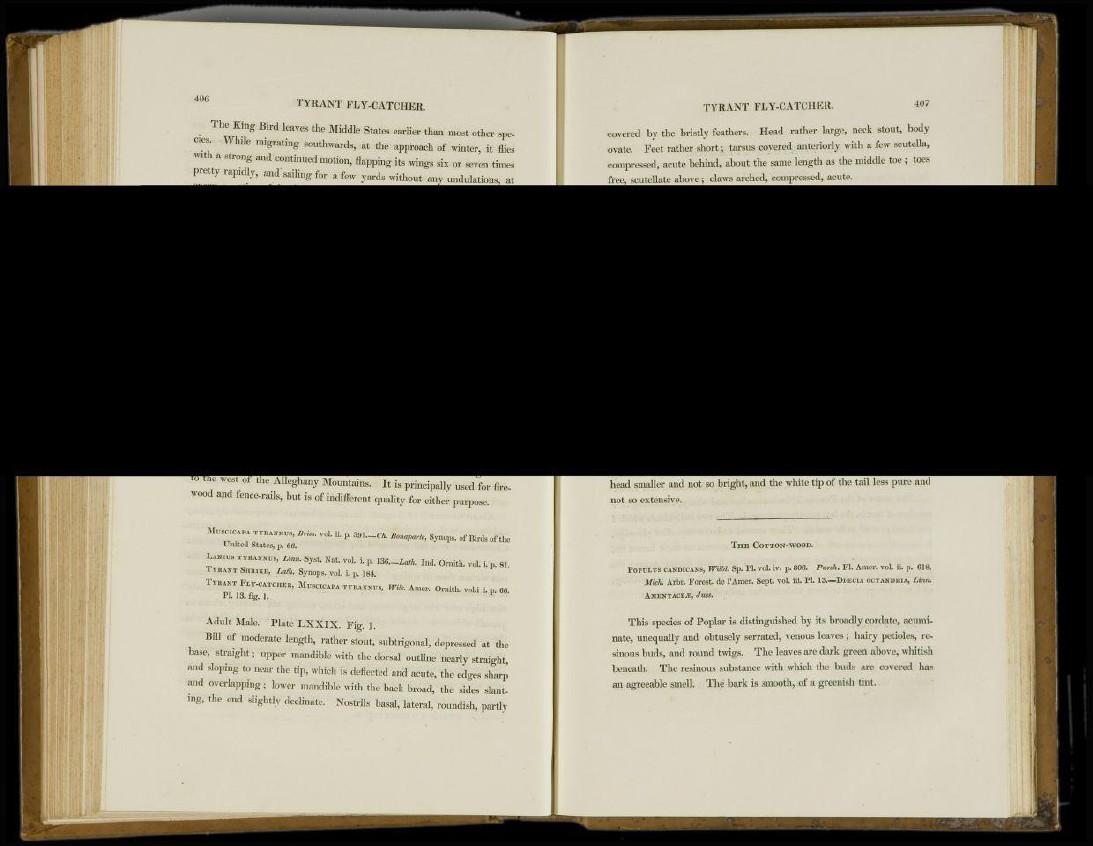
406 TYRANT FLY-CATCHER.
The Kuig Bird leaves the Middle States earlier than most other spec.
es^ While migrating southwards, at the approach of winter, it flies
•With a strong and continued motion, flapping its wings six or seven times
pretty rap.dly, andsailing for a few yards without any undulations, at
7 WT 0 t t h e A l l e 8 h a " y Mountain, It i s p l . ; n c i p a l l v u s e d " f o l . & . c .
wood and fenee-rails, but is of indifferent quality for either purpose.
.MISCICAPA TYBANNUS, Briss. vol. id. p. 391 Ch. Bonaparte, Synops. of Birds of the
United States, p. 66.
LANIUS TYRANXUS, Linn. Syst. Nat. vol. i. p. 136—Lath. Ind. Ornith. vol. i. p. 91.
TYRANT SHRIKE, Lath. Synops. vol. i. p. 184.
TYRANT FLY-CATCHER, MUSCÍCAPA TYRANNUS, Wils. Amer. Ornith. vol.i i. p. 66.
PI. 13. fig. 1.
Adult Male. Plate LXXIX. Fig. 1.
Bill of moderate length, rather stout, subtrigonal, depressed at the
base, straight; upper mandible with the dorsal outline nearly straight,
and sloping to near the tip, which is deflected and acute, the edges sharp
and overlapping; lower mandible with the back broad, the sides slanting,
the end slightly decimate. Nostrils basal, lateral, roundish, partly
head smaller and not so bright, and the white tip of the tail less pure and
not so extensive.
THE COTTON-WOOD.
POFELUS CANDICANS, Willd. Sp. PI. vol. iv. p. 806. Pursh. Fl. Amer. vol. ii. p. 618.
Mich, Arhr. Forest, de l'Amer. Sept. vol. iii. PI. 13.—DHECIA OCTANDRIA, Linn.
AMENTÁCEA, JUSS.
This species of Poplar is distinguished by its broadly cordate, acuminate,
unequally and obtusely serrated, venous leaves ; hairy petioles, resinous
buds, and round twigs. The leaves are dark green above, whitish
beneath. The resinous substance with which the buds are covered has
an agreeable smell. The bark is smooth, of a greenish tint.